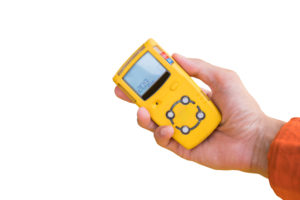
Gas leaks are a concern in confined spaces, and places of business. The health and environmental concerns are enough to make gas detection an essential part of overall safety and maintenance, but knowing where to get started or how to update your existing plan can be a bit daunting. Fortunately, advancing technology, including portable gas detection monitors, make these readings more accurate and accessible than ever. Read on to learn about gas leak detection and risk assessment.
Risks of Gas Leaks
There are many risks associated with toxic gas leaks. Sometimes these gasses are flammable, and the risk of fire or explosion is high. Something minor like a lit cigarette or spark could cause major problems. Therefore, some units require a Class 1, Div 2, safety certification. In addition to being flammable, gases can cause health problems in humans and animals, including fatigue, dizziness, nausea, headaches, breathing problems, loss of consciousness, cancers, and even death.
Gas Detection Options
Since the problems associated with gas leaks are so severe, it’s important to have a system of gas detection in place so you can be alerted before harm is caused. There are various products on the market, and you should consider quality, reliability, user ratings, specifications, functionality, and your budget. Look for units that offer the lowest cost-per-point and response time to make sure you are getting the most effectiveness for your money. Also consider what it would cost to run the gas detection equipment over time. Some detectors require more power to operate and can cost you tens of thousands of dollars over a fiscal year. Portable devices, fixed gas detectors, and all the accessories are available online, letting you compare options easily. Consider your objectives, the gasses to be detected, the type of location in which the detecting will take place, who will be using the devices, and how you want to be notified of gas leaks, readings, and problems. Temperature, humidity, pressure levels, and the maintenance you are able to perform, can affect the equipment you should choose.
Gas Detection and Risk Assessment Plans
As soon as gas leaks are detected, your emergency response plan should go into effect. Key personnel should be aware of these policies, and they should be well-documented. Minimizing risk and achieving a quick response time is in everyone’s best interest. When determining cost per point and operational costs, it’s best to work with a sales representative so they can help in your gas detection equipment selection.






